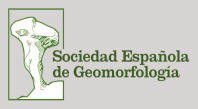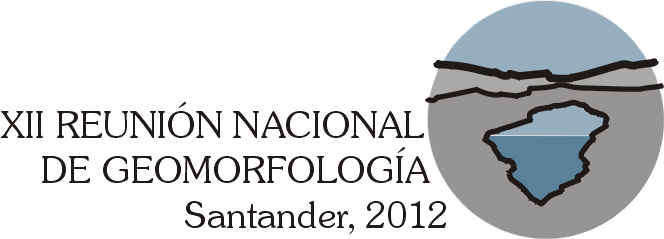Conferencias
C1
Multiple occurrence regional landslide events
Michael Crozier
School of Geography, Environment and Earth Sciences
Victoria University, Wellington, New Zealand
‘Multiple occurrence regional landslide events’ (MORLEs) consist of hundreds to thousands of shallow landslides occurring more or less simultaneously within a confined area. The triggering agent is commonly an intense rainstorm or an earthquake. Energy distribution (rainfall intensity or shaking intensity) in such events tends to attenuate outwards from a central point of maximum concentration. Correlation of the spatial distribution of landslides with the pattern of triggering energy is used to determine the approximate critical triggering threshold. Such correlations also reveal a strong positive relationship between energy intensity and slope response, measured by the extent of landsliding.
Determining the probability of occurrence in time and space of such events is complicated by difficulties in characterising magnitude, by the development of event resistance, and the inability of predicting rainstorm trajectories or earthquake epicentres.
Despite the fact that most of the landslides involved are confined to the regolith, their effect on landform development is shown to be significant.
C2
Transformation of alluvial fan systems into continuous fluvial systems: the Quaternary evolution of the Neogene sedimentary basins of the eastern Betics, Almeria, Spain
Adrian Harvey(1),
Elizabeth Whitfield (neeMaher)(2),
Anne Mather(3),
(2)JM
University,
Alluvial fans play an important coupling/buffering role in the development of fluvial systems. There is a common pattern in the evolution of uplifted sedimentary basins whereby basin-marginal alluvial fans undergo dissection, and terminal fluvial systems are replaced by incised through-drainage. In the uplifted Neogene basins of the eastern Betic Cordillera, the timing of this switch ranges from the early Pliocene to the Holocene, varying from basin to basin, dependant of the rate and amounts of post Pliocene epeirogenic uplift. Locally the regional pattern is complicated by ongoing tectonics and other factors such as base-level change and river capture.
In the Tabernas basin,
with maximum uplift rates there is little trace of early alluvial
fans, and their present distribution is related to patterns of
Neotectonic deformation. In the Sorbas basin, with high to
intermediate rates of uplift, the switch from Pliocene fans to
through drainage occurred during the early Pleistocene, but was
modified by tectonics
and river capture. On the
northern margins of the Vera basin, with intermediate to low uplift
rates, there was a progressive change from late Pliocene fan deltas,
to alluvial fans, to mid-Pleistocene through fluvial drainage. In
the
C3
La dimensión geomorfológica del cambio global; riesgos y oportunidades
Martín Hurtado(1), Luis
María Forte(1), Viola María Bruschi(2),
(1)
Universidad Nacional de La Plata, Argentina
(2) DCITIMAC, Universidad de Cantabria, Santander
(3) Depto de Geociencias, Universidade Federal de Sao
Carlos (Sao Paulo), Brasil
(4)
DGUOT, Universidad de Cantabria, Santander
Antonio Cendrero
Se plantea la hipótesis de que existe un “cambio geomorfológico global”, independiente del cambio climático, con efectos sobre procesos y riesgos superficiales mucho más significativos que los debidos a este. La hipótesis se basa en distintos datos: evolución temporal de procesos de ladera en valles cantábricos (Holoceno y tiempos recientes); variaciones de tasas de sedimentación en estuarios; cuantificación de la influencia humana sobre procesos de denudación-acumulación en zonas de Argentina y España; frecuencia de desastres debidos a procesos superficiales en el mundo. Los datos sugieren un fuerte incremento de las tasas de los procesos citados (¿expresión geomorfológica de “The Great Acceleration” de Steffen et al., 2011?), no explicable por variaciones climáticas. Se formuló un modelo que supone que esa aceleración refleja la creciente influencia humana, que afecta a los procesos y a la resiliencia del terreno. Se presentan datos sobre indicadores de la intensidad de la acción humana y de los procesos geomorfológicos citados en zonas de España, Argentina y Brasil, a distintas escalas, que son esencialmente coherentes con la hipótesis. Una consecuencia esperable de lo anterior, si la hipótesis fuera correcta, sería un aumento de la frecuencia o intensidad de los desastres relacionados con esos procesos. Se aportan datos a niveles regional, continental y global que muestran que, en efecto, eso ocurre.
La modificación de los procesos geomorfológicos no solo implica problemas (riesgos naturales), sino que también hace surgir oportunidades. Se ilustra esto último con un análisis que muestra que la intensificación de los procesos de erosión de suelos y sedimentación lagunar asociada, en la Pampa húmeda, da lugar a la formación de un recurso renovable que constituye la materia prima para la elaboración de de ladrillos, abriendo la posibilidad de formular estrategias sostenibles (en sentido estricto) para esa industria.


